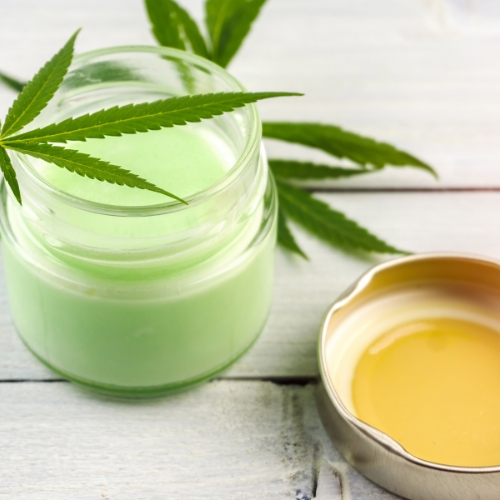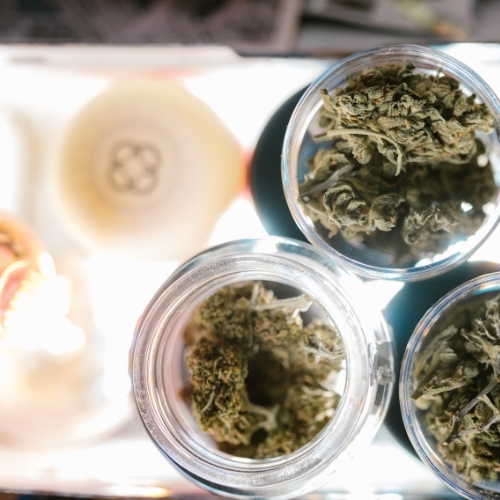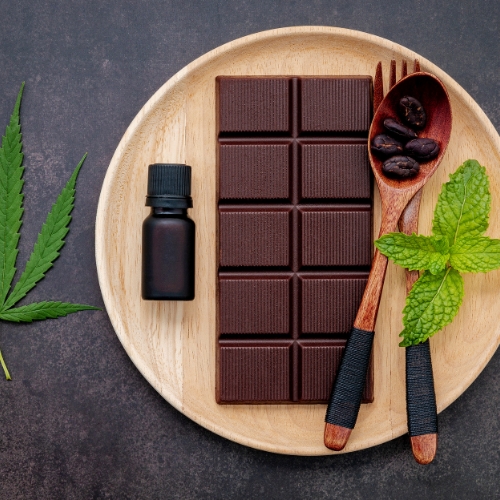Cannabis topicals have emerged as a fast-growing segment of the legal cannabis market, offering users a non‑intoxicating way to enjoy the plant’s therapeutic properties. Unlike edibles or inhaled cannabis, topicals are applied directly to the skin and deliver localized relief without the psychoactive effects commonly associated with THC. Whether formulated as balms, lotions, transdermal patches, or salves, cannabis topicals cater to individuals seeking targeted support for pain, inflammation, and skin health. This comprehensive guide will explore how topicals work, the various product formats available, their benefits and uses, and best practices for selecting and applying these innovative cannabis creations.
What Are Cannabis Topicals?
Cannabis topicals are skin-care and pain‑relief products infused with cannabinoids such as THC, CBD, or a balanced ratio of both. Instead of entering the bloodstream and crossing the blood‑brain barrier, the active ingredients in topical formulations interact with cannabinoid receptors in the skin and underlying tissues. This localized mechanism allows users to address specific areas of discomfort—like sore muscles, arthritic joints, or dry, irritated skin—without experiencing a “high.” The trend toward cannabis-infused topicals reflects broader consumer interest in natural, plant‑based remedies that combine traditional skincare techniques with modern cannabinoid science.
How Cannabis Topicals Work
Upon application, cannabinoids bind to CB2 receptors found throughout the skin’s endocannabinoid system, modulating inflammatory responses and influencing cellular processes that affect pain perception and tissue repair. Many formulations also include natural anti‑inflammatory and moisturizing ingredients—such as arnica, menthol, shea butter, or essential oils—to enhance the soothing effect and improve skin hydration. When applied consistently, topicals can support long‑term management of chronic conditions, accelerate recovery from physical exertion, and maintain healthy skin barrier function.
Common Types of Topical Products
The market offers a diverse array of topical formats to suit different preferences and therapeutic goals. Balms and salves typically feature a thicker, wax‑based consistency that creates a protective layer over the skin, making them ideal for overnight use or targeted spot treatments. Lotions and creams provide a lighter texture, absorbing quickly and offering full‑body application for overall skin care or widespread muscle soreness. Transdermal patches leverage advanced permeation enhancers to deliver controlled doses of cannabinoids over an extended period, making them a discreet option for consistent relief throughout the day. Gels and roll‑on applicators combine portability with ease of use, allowing users to target smaller areas with minimal fuss.
Therapeutic Benefits and Targeted Relief
Cannabis topicals are prized for their ability to alleviate a variety of conditions without systemic effects. Athletes and fitness enthusiasts often turn to CBD‑rich balms to reduce post‑workout muscle soreness and improve recovery times. Individuals with arthritis or neuropathic pain can apply THC‑CBD blends to inflamed joints, helping manage pain and stiffness. Topicals infused with soothing botanicals like lavender or chamomile can calm sensitive or irritated skin, making them beneficial for eczema, psoriasis, and dry‑skin conditions. Some formulations incorporate antioxidant‑rich carrier oils—such as jojoba or argan oil—to support anti‑aging skincare routines by promoting collagen production and protecting against environmental damage.
Application Methods and Best Practices
For optimal results, it is important to apply cannabis topicals to clean, dry skin and gently massage the product into the targeted area until fully absorbed. Conducting a patch test on a small area can help identify potential sensitivities before wider use. Transdermal patches should be placed on areas with minimal hair and changed according to the manufacturer’s recommended schedule, typically every 8 to 12 hours. Because topical absorption can vary based on skin thickness and temperature, warming the area with a gentle massage or covering it with a warm cloth can enhance permeability. Consistent daily application often yields better outcomes than sporadic use, especially for chronic conditions.
Safety and Legal Considerations
Topicals containing only CBD are legal nationwide in Canada, while THC‑infused products must comply with federal regulations limiting THC content per package and packaging requirements such as child‑resistant, opaque containers. It is crucial to purchase from licensed producers who provide Certificates of Analysis confirming cannabinoid potency and the absence of harmful contaminants. Users should avoid applying topicals to open wounds or broken skin and discontinue use if irritation or allergic reactions occur. Because topical products do not produce intoxication, they are often exempt from consumption restrictions; nevertheless, it is wise to verify provincial guidelines regarding possession limits and public use.
Storage and Shelf Life
Proper storage preserves the efficacy and safety of cannabis topicals. Keep products in a cool, dark place away from direct sunlight and extreme temperatures, which can degrade cannabinoids and destabilize botanical ingredients. Airtight containers help maintain the intended consistency and prevent microbial growth in water‑based formulations. Most topicals include an expiration date; if a product develops an off‑smell, discoloration, or separation that does not re‑blend easily, it is best to dispose of it. For balms and salves, refrigeration is optional but can extend shelf life, particularly in warm climates.
Consumer Tips for Choosing Quality Topicals
When selecting a cannabis topical, prioritize products with transparent ingredient lists and third‑party lab testing that verifies cannabinoid levels and checks for pesticides, heavy metals, and residual solvents. Consider your intended use—ask whether you need broad-spectrum CBD, a full‑spectrum THC‑CBD blend, or a THC‑free formulation. Evaluate texture preferences and delivery methods: lotion or cream for quick absorption, balm for prolonged contact, or patch for steady dosing. Read customer reviews for insights into effectiveness and scent profiles, and start with a smaller size or sample to assess compatibility with your skin and desired relief.
Conclusion
Cannabis topicals represent a versatile, non‑intoxicating approach to harnessing the plant’s therapeutic power. By understanding how topicals work, exploring the various product formats, and following best practices for application and storage, consumers can confidently integrate these products into their wellness routines. Whether you seek targeted pain relief, skin‑nourishing benefits, or consistent dosing through patches, well‑formulated cannabis topicals offer an effective and user‑friendly solution. Embrace the rising tide of topical innovation and discover the personalized relief that cannabis-infused balms, lotions, and patches can provide.






